These days it
seems like every piano manufacturer boasts "Since (insert ancient year
here)." Unlike most brands you'll see today claiming to have been
around "Since 18xx", the actual edifice where Bohemia has been hand
making pianos for over 100 years remained all the way until 2006, when
it was finally merged with Bohemia's new grand piano factory (also in
the Czech Republic). They haven't moved to production to China or
brought in components from China like most brands.
The Bohemia piano, along with Estonia
pianos, has threatened the status quo of more well known piano
manufacturers by offering unique, high quality pianos that possess
character, style and musical qualities all at prices similar to
lesser-rated, mass produced pianos. Such qualities have been
desperately sought by buyers in North America -- especially those
interested in resale value, those who appreciate handcrafted European
products and/or those who are looking for, well, something a little
better.
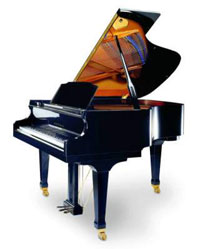 The Bohemia piano factory began making pianos in 1871.
After WWII, commerce in Czechoslovakia became nationalized, much like
that of the rest of socialist eastern Europe. The Czechoslovakian
government at that time used the name Petrof for all the
Czechoslovakian piano factories (seven-ish in all) since Petrof was the
The Bohemia piano factory began making pianos in 1871.
After WWII, commerce in Czechoslovakia became nationalized, much like
that of the rest of socialist eastern Europe. The Czechoslovakian
government at that time used the name Petrof for all the
Czechoslovakian piano factories (seven-ish in all) since Petrof was the
largest and most recognizable piano name at that time. In fact, the
serial numbers of all Czech Republic pianos employ Petrof's serial
numbering.
In 1989 however, the new government began gradually giving back
companies to former owners or creating management buyouts in the
interest of privatization. In other cases, companies were simply sold
to outside investors. Much like the story of the Estonia Piano Company,
in the case of what was about to become the Bohemia Piano Company,
there was a management buyout where the employees became the owners.
 For those who aren't geography or history buffs, Czechoslovakia became
the Czech Republic in 1993 when Slovakia became separate from
Czechoslovakia. The capital of the new "Czech Republic" was now Prague.
Bohemia represents the northern region of the Czech Republic, while
Moravia is the lower region.
For those who aren't geography or history buffs, Czechoslovakia became
the Czech Republic in 1993 when Slovakia became separate from
Czechoslovakia. The capital of the new "Czech Republic" was now Prague.
Bohemia represents the northern region of the Czech Republic, while
Moravia is the lower region.
In 1993, Bohemia began producing pianos for distribution in Europe but
didn't begin exporting them to the United States until 1995, and even
then it was in very small numbers. At that time and for a few years
that followed, everything was rapidly evolving in this part of the
world to the point where each piano had a tendency to be just a
liiiit-tle bit better than the one before it. Eventually, all that
settled down into what is now considered to be a wonderful, world-class
piano line.
The original piano factory in Jihlava continued to handcraft the entire
Bohemia vertical piano line -- ~700 pianos annually, until 2006 when it
was merged with Bohemia's modernized grand piano factory in Hradec
Kralove. The new grand piano factory, built from the ground up in
2000 is responsible for Bohemia's annual grand piano production of 180
pianos. That's right...only 180. By comparison, Kawai can build that in
a shift. Either Bohemia pianos are extremely handmade or the company is
preparing themselves to be featured on an upcoming A&E episode of
"Great Automation Blunders."
In 2005, Bohemia was the lucky recipient of what would be the
manufacturing equivalent of a patron saint. It was purchased by
the mighty Bechstein company of Germany. Bechstein recognized the
value of sharing facilities, technologies, etc and Bohemia was once
again brought to new heights.
With today's total Bohemia production of less than 2000 pianos and
considering that Bohemia distributes throughout Europe and Asia, there
aren't a lot of Bohemia pianos available to audition in the U.S.
But don't let the paltry production fool you. It's all by design. 2000
is the annual CAPACITY -- not representative of the present demand in
the event that more could be produced. To that end, you won't be seeing
any "Hurry now...50%-70% Bohemia pianos" sale ads any time soon. We'll
leave that for the manufacturers sitting on warehouses full of
pianos. You'll need to decide, "What's the better value...getting
50% off of a meritless MSRP or getting a smaller discount off of a
better piano?" If you need help with this, please ask a piano
technician or teacher!
 If
you are familiar with Larry Fine's Piano Book, you may notice that his
most recent FULL edition (published in 2001) doesn't have the Bohemia
piano listed in the rankings. That is because in 2001, there were
basically no Bohemia pianos in the U.S. for him to review. In
subsequent years, Mr. Fine consistently ranks Bohemia a "Group 2" (or
"high performance") piano. This category is dominated by small,
cherished European brands that are relatively unknown to the average
U.S. buyer. This elevated status also places it above the standard
"Group 3" Yamaha, Kawai, Boston pianos and all Korean pianos (Young
Chang, Pramberger, Samick).
If
you are familiar with Larry Fine's Piano Book, you may notice that his
most recent FULL edition (published in 2001) doesn't have the Bohemia
piano listed in the rankings. That is because in 2001, there were
basically no Bohemia pianos in the U.S. for him to review. In
subsequent years, Mr. Fine consistently ranks Bohemia a "Group 2" (or
"high performance") piano. This category is dominated by small,
cherished European brands that are relatively unknown to the average
U.S. buyer. This elevated status also places it above the standard
"Group 3" Yamaha, Kawai, Boston pianos and all Korean pianos (Young
Chang, Pramberger, Samick).
Most Bohemia models are available with a German Renner action, although
many clients seem to actually prefer the Czech action in some models
and forego the additional expense of a Renner action. The model 156
(5'3") and the 185 (6'1") were the first models to be made at the new
factory and are highly regarded models. The other models -- the 173
(5'8"), the 225 (7'4") and the 275 (8'11") have all since been added to
the same critical acclaim. The entire piano line is incredibly lyrical
and musical -- qualities that have eluded lower-rated pianos and
mass-produced pianos.
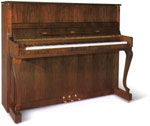 Bohemia's vertical piano line
ranges from small studios to 53" professional uprights and employs
identical quality / musicality across the entire product line.
Extraordinary veneers and tasteful accents separate Bohemia from the
rest of the piano industry -- where dull or questionable designs have
been a tragic and pervasive trend. For much information and
availability, please call Rick @ 630-584-5000.
All Bohemia pianos have a 5 year parts & labor factory
warranty. The same length of warranty that Steinway and other
world class brands offer. Read more about warranties here.
Bohemia's vertical piano line
ranges from small studios to 53" professional uprights and employs
identical quality / musicality across the entire product line.
Extraordinary veneers and tasteful accents separate Bohemia from the
rest of the piano industry -- where dull or questionable designs have
been a tragic and pervasive trend. For much information and
availability, please call Rick @ 630-584-5000.
All Bohemia pianos have a 5 year parts & labor factory
warranty. The same length of warranty that Steinway and other
world class brands offer. Read more about warranties here.
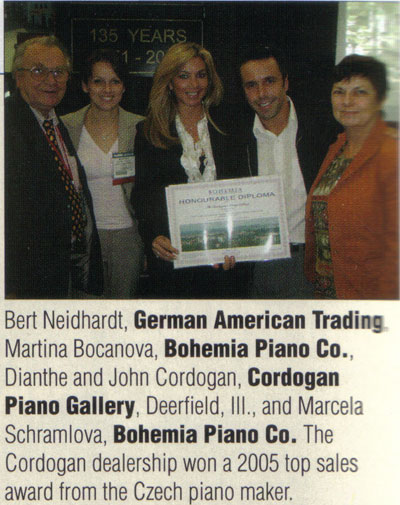






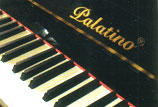


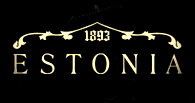

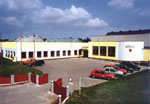
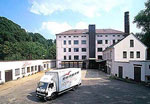
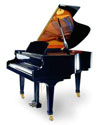

 The Bohemia piano factory began making pianos in 1871.
After WWII, commerce in Czechoslovakia became nationalized, much like
that of the rest of socialist eastern Europe. The Czechoslovakian
government at that time used the name Petrof for all the
Czechoslovakian piano factories (seven-ish in all) since Petrof was the
The Bohemia piano factory began making pianos in 1871.
After WWII, commerce in Czechoslovakia became nationalized, much like
that of the rest of socialist eastern Europe. The Czechoslovakian
government at that time used the name Petrof for all the
Czechoslovakian piano factories (seven-ish in all) since Petrof was the For those who aren't geography or history buffs, Czechoslovakia became
the Czech Republic in 1993 when Slovakia became separate from
Czechoslovakia. The capital of the new "Czech Republic" was now Prague.
Bohemia represents the northern region of the Czech Republic, while
Moravia is the lower region.
For those who aren't geography or history buffs, Czechoslovakia became
the Czech Republic in 1993 when Slovakia became separate from
Czechoslovakia. The capital of the new "Czech Republic" was now Prague.
Bohemia represents the northern region of the Czech Republic, while
Moravia is the lower region. If
you are familiar with Larry Fine's Piano Book, you may notice that his
most recent FULL edition (published in 2001) doesn't have the Bohemia
piano listed in the rankings. That is because in 2001, there were
basically no Bohemia pianos in the U.S. for him to review. In
subsequent years, Mr. Fine consistently ranks Bohemia a "Group 2" (or
"high performance") piano. This category is dominated by small,
cherished European brands that are relatively unknown to the average
U.S. buyer. This elevated status also places it above the standard
"Group 3" Yamaha, Kawai, Boston pianos and all Korean pianos (Young
Chang, Pramberger, Samick).
If
you are familiar with Larry Fine's Piano Book, you may notice that his
most recent FULL edition (published in 2001) doesn't have the Bohemia
piano listed in the rankings. That is because in 2001, there were
basically no Bohemia pianos in the U.S. for him to review. In
subsequent years, Mr. Fine consistently ranks Bohemia a "Group 2" (or
"high performance") piano. This category is dominated by small,
cherished European brands that are relatively unknown to the average
U.S. buyer. This elevated status also places it above the standard
"Group 3" Yamaha, Kawai, Boston pianos and all Korean pianos (Young
Chang, Pramberger, Samick). Bohemia's vertical piano line
ranges from small studios to 53" professional uprights and employs
identical quality / musicality across the entire product line.
Extraordinary veneers and tasteful accents separate Bohemia from the
rest of the piano industry -- where dull or questionable designs have
been a tragic and pervasive trend. For much information and
availability, please call Rick @
Bohemia's vertical piano line
ranges from small studios to 53" professional uprights and employs
identical quality / musicality across the entire product line.
Extraordinary veneers and tasteful accents separate Bohemia from the
rest of the piano industry -- where dull or questionable designs have
been a tragic and pervasive trend. For much information and
availability, please call Rick @ 
